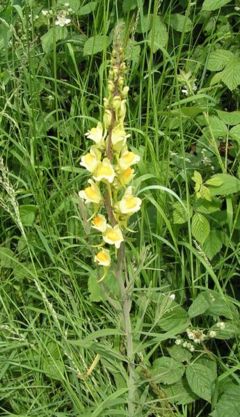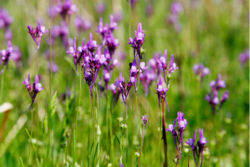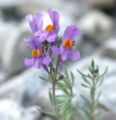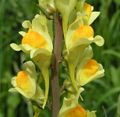Linaria
| Linaria {{{status}}} Fossil range: {{{fossil_range}}}
| ||||||||||||||||||||||||||||||||||||||||||||||||||||||||||||||||||
|---|---|---|---|---|---|---|---|---|---|---|---|---|---|---|---|---|---|---|---|---|---|---|---|---|---|---|---|---|---|---|---|---|---|---|---|---|---|---|---|---|---|---|---|---|---|---|---|---|---|---|---|---|---|---|---|---|---|---|---|---|---|---|---|---|---|---|
 Linaria vulgaris | ||||||||||||||||||||||||||||||||||||||||||||||||||||||||||||||||||
| Plant Info | ||||||||||||||||||||||||||||||||||||||||||||||||||||||||||||||||||
| ||||||||||||||||||||||||||||||||||||||||||||||||||||||||||||||||||
| Scientific classification | ||||||||||||||||||||||||||||||||||||||||||||||||||||||||||||||||||
| ||||||||||||||||||||||||||||||||||||||||||||||||||||||||||||||||||
| [[{{{diversity_link}}}|Diversity]] | ||||||||||||||||||||||||||||||||||||||||||||||||||||||||||||||||||
| {{{diversity}}} | ||||||||||||||||||||||||||||||||||||||||||||||||||||||||||||||||||
| Binomial name | ||||||||||||||||||||||||||||||||||||||||||||||||||||||||||||||||||
| {{{binomial}}} | ||||||||||||||||||||||||||||||||||||||||||||||||||||||||||||||||||
| Trinomial name | ||||||||||||||||||||||||||||||||||||||||||||||||||||||||||||||||||
| {{{trinomial}}} | ||||||||||||||||||||||||||||||||||||||||||||||||||||||||||||||||||
| Type Species | ||||||||||||||||||||||||||||||||||||||||||||||||||||||||||||||||||
| {{{type_species}}} | ||||||||||||||||||||||||||||||||||||||||||||||||||||||||||||||||||
| Species | ||||||||||||||||||||||||||||||||||||||||||||||||||||||||||||||||||
| About 100 species; see text | ||||||||||||||||||||||||||||||||||||||||||||||||||||||||||||||||||
| [[Image:{{{range_map}}}|{{{range_map_width}}}|]] | ||||||||||||||||||||||||||||||||||||||||||||||||||||||||||||||||||
| Synonyms | ||||||||||||||||||||||||||||||||||||||||||||||||||||||||||||||||||
| {{{synonyms}}} |
Linaria is a genus of about 100 species of herbaceous annuals and perennials that was traditionally placed in the foxglove family Scrophulariaceae. Due to new genetic research, it has now been placed in the vastly expanded family Plantaginaceae. The genus is native to temperate regions of Europe, northern Africa and Asia, with the highest species diversity in the Mediterranean region.
The members of this genus are known in English as toadflax, a name shared with several related genera. The scientific name means "resembling Linum" (flax), which the foliage of some species superficially resembles.
Closely related genera include the Nuttallanthus (American toadflaxes, recently split from Linaria), Antirrhinum (snapdragons) and Cymbalaria (Ivy-leaved toadflaxes).
- Selected species

Common Toadflax (Linaria vulgaris) is a European species which is widely introduced elsewhere. The yellow and orange flowers are seen in many waste places. The species is also know n in some areas as "butter-and-eggs".
Broomleaf Toadflax or Dalmatian Toadflax (Linaria genistifolia, syn. L. dalmatica) is a native of southeast Europe that has become a weed in parts of North America.
Purple Toadflax (Linaria purpurea) is native to the Mediterranean region, and is a popular garden plant, with erect stems up to 1 m tall when fully mature, with numerous dark purple or pink flowers.
Pale Toadflax (Linaria repens) from west Europe is similar to L. purpurea, but has more pale colored flowers.
Since Linaria species are toxic to livestock, the plants are regarded as noxious weeds. However, toadflaxes are used as food plants by the larvae of some Lepidoptera species, including the Mouse Moth, and the common buckeye.
-
Alpine Toadflax (Linaria alpina)
-
Linaria maroccana
-
Common Toadflax - flower detail
-
Linaria purpurea
Medicinal Uses
Common toadflax is especially valued for its strongly laxative and diuretic activities. Internally it us used in the treatment of edema, jaundice, liver diseases and skin problems. Externally it is used in an ointment to treat hemorrhoids, skin eruptions, sores and ulcers. The juice of the plant, is a good remedy for inflamed eyes, though should be used with caution. Dosage is critical and it should not be given to pregnant women, since the plant might be slightly toxic.



